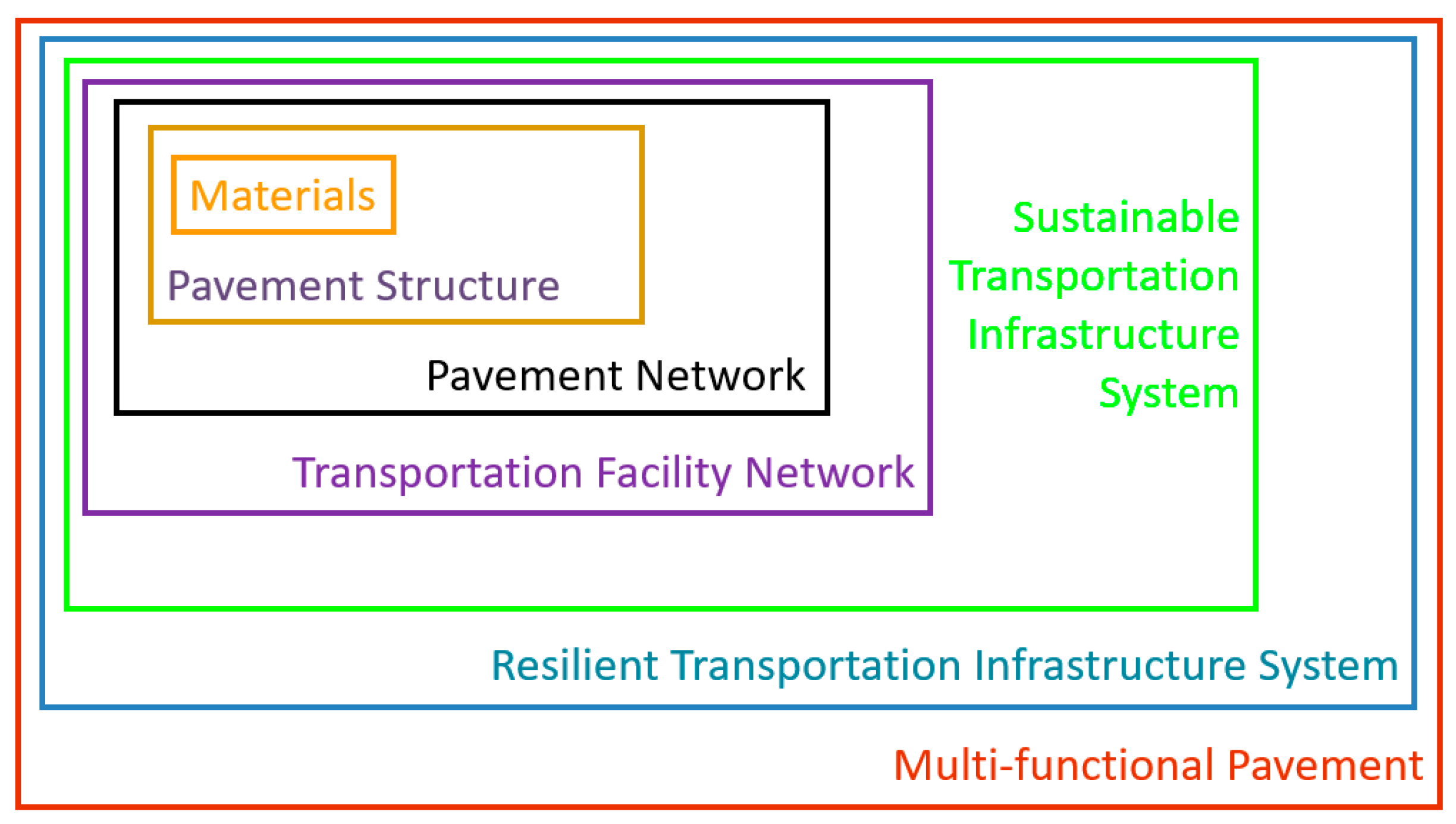Keynote Presentation: Improving Pavement Sustainability through Integrated Design, Construction, Asset Management, LCA, LCCA, and S-LCA †
Abstract
:1. Introduction
2. Overview of the Presentation
3. Calibration of Mechanistic–Empirical Structural Design Methods Using Asset Management Data
4. Improved Life Cycle Cost Analysis Using ME Design and Asset Management Results
5. Environmental Life Cycle Assessment Using Materials Data, ME Design Results, Construction Quality Data, and PMS Models
6. Environmental Impact Analysis in the PMS and Prioritization of Strategies Using Life Cycle Assessment and Life Cycle Cost Analysis
7. Integration of Social Vulnerability into Decision Support
8. Summary
Funding
Institutional Review Board Statement
Informed Consent Statement
Data Availability Statement
Conflicts of Interest
References
- Van Dam, T.; Harvey, J.; Muench, S.; Smith, K.; Snyder, M.; Al-Qadi, I.; Ozer, H.; Meijer, J.; Ram, P.; Roesler, J.; et al. Towards Sustainable Pavement Systems: A Reference Document. Report FHWA-HIF-15-002. 2015. Available online: https://rosap.ntl.bts.gov/view/dot/38541 (accessed on 10 August 2023).
- Wu, R.; Harvey, J.; Lea, J.; Jones, D.; Louw, S.; Mateos, A.; Hernandez-Fernandez, N.; Shrestha, R.; Holland, J. Calibration of a Mechanistic-Empirical Cracking Model Using Network-Level Field Data. Transp. Res. Rec. 2022, 2676, 127–139. [Google Scholar] [CrossRef]
- Lea, J.; Harvey, J.; Saboori, A.; Butt, A.A. eLCAP: A Web Application for Environmental Life Cycle Assessment for Pavements. 2022. Available online: https://escholarship.org/uc/item/9f5181j1 (accessed on 10 August 2023).
- Harvey, J.T.; Butt, A.A.; Lozano, M.T.; Kendall, A.; Saboori, A.; Lea, J.D.; Kim, C.; Basheer, I. Life Cycle Assessment for Transportation Infrastructure Policy Evaluation and Procurement for State and Local Governments. Sustainability 2019, 11, 6377. [Google Scholar] [CrossRef]


Disclaimer/Publisher’s Note: The statements, opinions and data contained in all publications are solely those of the individual author(s) and contributor(s) and not of MDPI and/or the editor(s). MDPI and/or the editor(s) disclaim responsibility for any injury to people or property resulting from any ideas, methods, instructions or products referred to in the content. |
© 2023 by the author. Licensee MDPI, Basel, Switzerland. This article is an open access article distributed under the terms and conditions of the Creative Commons Attribution (CC BY) license (https://creativecommons.org/licenses/by/4.0/).
Share and Cite
Harvey, J. Keynote Presentation: Improving Pavement Sustainability through Integrated Design, Construction, Asset Management, LCA, LCCA, and S-LCA. Eng. Proc. 2023, 36, 69. https://doi.org/10.3390/engproc2023036069
Harvey J. Keynote Presentation: Improving Pavement Sustainability through Integrated Design, Construction, Asset Management, LCA, LCCA, and S-LCA. Engineering Proceedings. 2023; 36(1):69. https://doi.org/10.3390/engproc2023036069
Chicago/Turabian StyleHarvey, John. 2023. "Keynote Presentation: Improving Pavement Sustainability through Integrated Design, Construction, Asset Management, LCA, LCCA, and S-LCA" Engineering Proceedings 36, no. 1: 69. https://doi.org/10.3390/engproc2023036069
APA StyleHarvey, J. (2023). Keynote Presentation: Improving Pavement Sustainability through Integrated Design, Construction, Asset Management, LCA, LCCA, and S-LCA. Engineering Proceedings, 36(1), 69. https://doi.org/10.3390/engproc2023036069





